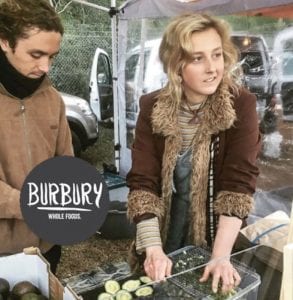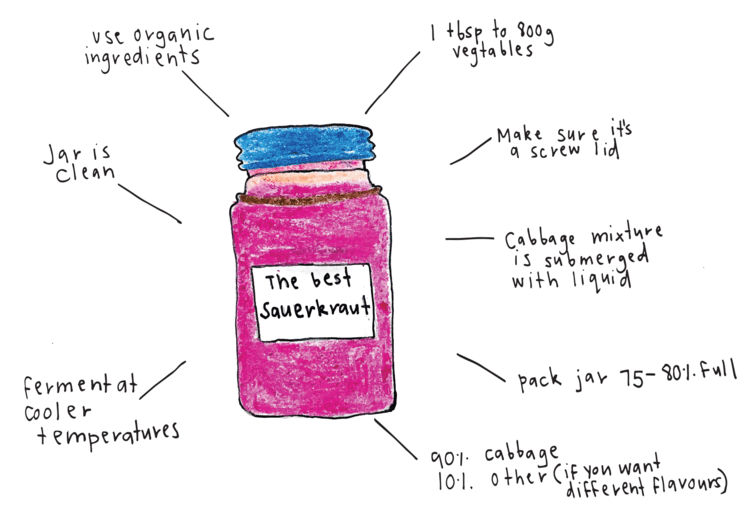WHY FERMENTING ISN’T SCARY
“As far as I know, there has never been a documented case of food-borne illness from fermented vegetables. Risky is not a word I would use to describe vegetable fermentation. It is one of the oldest and safest technologies we have”. – Fred Breidt, microbiologist, US Department of Agriculture
Fermented foods and drinks have been part of culinary traditions since before recorded history as a method of preserving food. Ferments kept people fed during the colder months, were savoured as delicacies, celebrated in sacraments, embraced as daily staples and prescribed as remedies.
Under the modern microscope, fermented food has been found to have a long list of health benefits. Live bacterias are created throughout the process that help you to restore and diversify your gut microbiome, making food more digestible.
In spite of this, it wasn’t until very recent times that ferments went through somewhat of a renaissance with products such as kombucha and sauerkraut becoming ubiquitous on our shopping shelves.
Although it may seem scary to make your own (due to the fact that we are taught to view bacteria as dangerous) it does not have to be.
Not only is it a lot cheaper to make your own, creating your own food is a far more magical way to eat.
WHITE CABBAGE, BEETROOT AND GINGER KRAUT
Gluten free, vegan
INGREDIENTS
2kg x white cabbage
1 x medium beetroot grated
1 x large knob of ginger grated
40g x celtic sea salt (fine)
EQUIPMENT
1 large jar with screw lid (air lock)
1 large bowl
METHOD
Take off outer leaves of cabbage. Trim and quarter the cabbage, removing the fibrous core. Chop the cabbage into 3mm slices. Place into a large bowl. Add ginger, beetroot and salt. Rub the salt into the mix.
Leave for 10 minutes.
Using clean hands scrunch the mixture firmly, until the cabbage has released plenty of liquid.
Take your clean jar (I would run it through the dishwasher or gently shake with a little bit of boiling water)and fill it half way with the cabbage mixture, push the cabbage down very firmly with your knuckles. You can do this by standing the jar on the bench and using your clean fist and body weight. Keep adding the mixture until the jar is full (with just 2cm free space) and the cabbage is submerged in liquid. Cover the top of the cabbage with a left over outer leaf and screw the lid on.
If the jar is not full, place a sterilised jar/cup onto it to make sure the mixture keeps submerged under the liquid.
Place in a box as it will leak (this is normal) and in a dark place – somewhere the temperature doesn’t change too much. I leave mine in the back of a kitchen cupboard.
Leave for 7-14 days (depending on how strong you want the taste to be).
What happens if there is mould?
If it is just on the surface of your sauerkraut and is a greenish or grey colour it is fine to just remove and place the sauerkraut into a fresh jar and into the fridge to stop fermentation. However, throw out any ferments that have traces of black, pink or orange mould, if they have an off smell or if mould is spread throughout.
I never ferment to hurt you
About The Author

She also offers conscious catering blessed with high vibration, local and sustainable Australian flavours. Refined sugar free, vegan and gluten free available. You can find out more about her at https//:www.burburywholefoods.com &
https://www.instagram.com/burburywholefoods/
Tash also holds wisdom about yoga and meditation. She really is a goddess of all trades.


